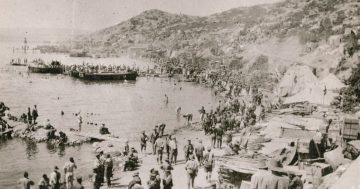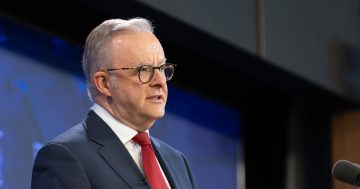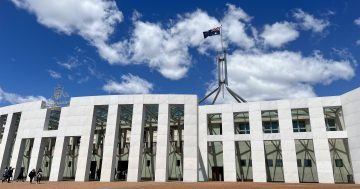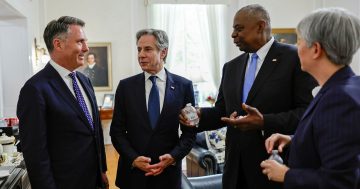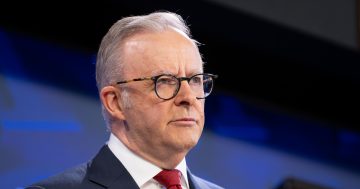Andrew Southam* says Russia is taking every opportunity to misdirect over Ukraine – but British Governments have themselves struggled to maintain balance in previous propaganda campaigns.
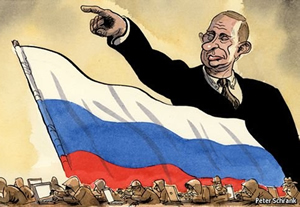 “War is peace, freedom is slavery, ignorance is strength” are contradictions of misinformation written outside the Ministry of Truth in George Orwell’s imagined future world of manipulation, 1984.
“War is peace, freedom is slavery, ignorance is strength” are contradictions of misinformation written outside the Ministry of Truth in George Orwell’s imagined future world of manipulation, 1984.
Some 74 years after that novel was written, and in the real world, Russia takes every opportunity to misdirect over Ukraine.
British Governments have themselves struggled to maintain balance in previous propaganda campaigns, notably with their World War I Ministry of Information and later a Cold War ‘information’ unit.
In the dark months of 1914, German disinformation raced ahead with a propaganda agency whose White Book portrayed the country as a victim of Serbian terrorism and Russian aggression.
UK Chancellor, Lloyd George asked Charles Masterman, a Liberal politician with literary leanings, to respond.
Masterman created Britain’s War Propaganda Bureau at Wellington House that year, seeking advice from 25 writing celebrities, all sworn to secrecy.
This group sounds like an undergraduate reading list, from Victorian novelist, Thomas Hardy to HG Wells.
Some 53 writers subsequently signed the 1915 Author’s Declaration proclaiming German crimes.
Many worked at Wellington House, analysing material and penning documents.
Among them were Arthur Conan Doyle, Rudyard Kipling and historians, Lewis Namier and Arnold Toynbee.
Wellington House produced some 1,200 wartime pamphlets, as well as films like Britain Prepared and The Battle of the Somme.
Only two trusted photographers were allowed at the warfront. Anyone else taking photos was liable for execution by firing squad.
Painters involved in the efforts included portraitist, John Lavery and surrealist, Paul Nash.
Unsavoury efforts included activity to shift neutral United States opinion by claiming medals had been minted to commemorate the passenger liner RMS Lusitania’s sinking by a German submarine in May 1915 in which more than 100 Americans died.
Home Office and Foreign Office propaganda units also sprang up; the War Office managed information on the front through MI7B.
Editor of the Daily Chronicle, Ronald Donald designed a new Government propaganda structure when he was asked to review the arrangements.
Donald proposed a single operation with one chief. In February 1917, John Buchan became Director of the new Department of Information, with politician, Sir Edward Carson taking over the renamed Ministry of Information.
Press barons also participated. Daily Express magnate, Lord Beaverbrook became Minister of Information, with Lord Northcliffe, owner of The Times and the Daily Mail, responsible for enemy propaganda and Donald for neutral nations.
The Ministry was dissolved in 1918 but revived between 1939 and 1945 to fight the Nazi threat.
When Cold War Soviet propaganda needed countering, Foreign Secretary, Ernest Bevin started the blandly-named Information Research Department (IRD) in 1948.
The IRD influenced media like the British Broadcasting Corporation and Reuters, published some 100 titles and used agents of influence such as Bertrand Russell and Robert Conquest.
It became the largest Foreign Office Department, with international activities from Egypt to Indonesia.
Orwell’s 1984 was promoted with Chinese, Burmese and Arabic translations.
Anxious to pierce the Soviet mirage, Orwell passed the IRD 38 names who he thought were “crypto-communists, fellow-travellers or inclined that way and should not be trusted”.
Among them were Labour MP, Tom Driberg and actor, Michael Redgrave, who later featured in the original 1984 film.
Home Secretary, James Callaghan allegedly used the IRD to tarnish the reputation of prominent hard-left trade union leaders.
The propaganda unit also campaigned against the Irish Republican Army and promoted British entry into the European Economic Community for Prime Minister, Edward Heath.
By the mid-1970s, Labour circles worried journalists were close to an exposé and fretted about the right-wing credentials of some IRD staff.
Foreign Secretary, David Owen closed the IRD in 1977 to save money and against the background of détente.
The Guardian newspaper revealed the unit’s existence months later.
Britain’s Ministry of Information and the IRD arguably played important roles contesting false narratives, but avoiding the contradictions of Orwell’s Ministry of Truth required constant vigilance.
*Andrew Southam is a freelance history correspondent and writer.
This article first appeared on the United Kingdom’s Civil Service World website.


